The rise of container cabin communities has garnered increasing attention in recent years, sparking a debate on the viability and impact of this trend in housing. As traditional housing markets continue to fluctuate, and concerns such as affordability and sustainability come to the fore, container homes present an alternative that challenges conventional norms of home ownership and community development. They offer a potentially cost-effective solution to housing shortages, especially in urban areas where space and resources are at a premium.
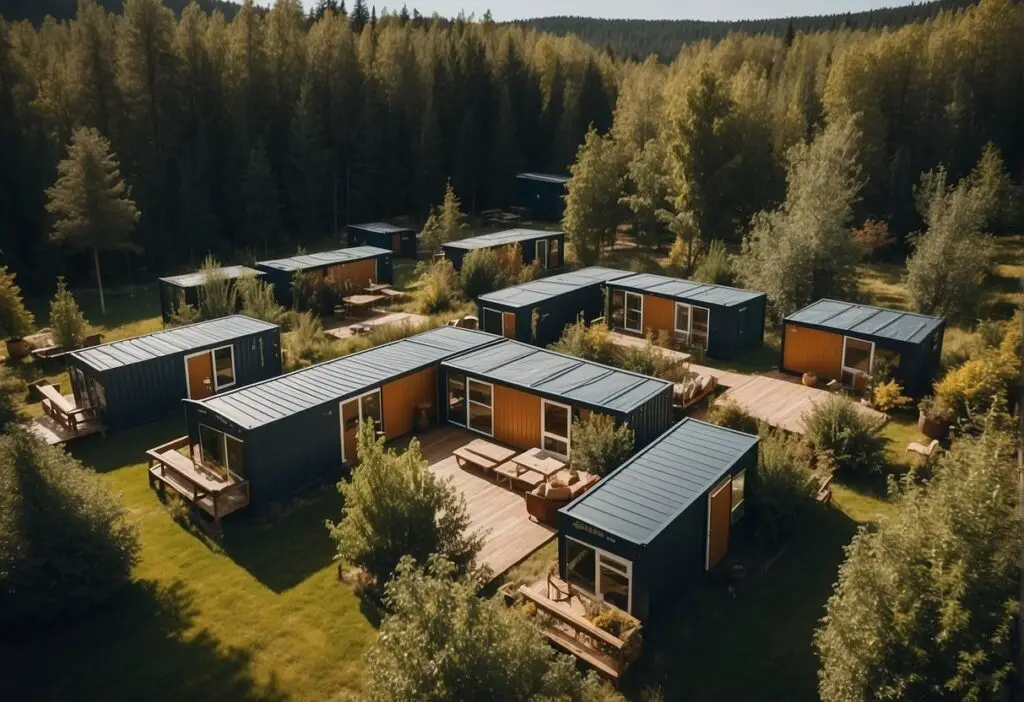
However, the shift towards container cabin communities isn’t without its concerns. Questions arise regarding the regulations, safety, and long-term durability of such dwellings. As society leans towards more sustainable living practices, it becomes essential to consider not only the environmental implications but also the social and economic impacts of these emerging communities.
While the creative reuse of shipping containers captures the imagination, potential residents and policymakers must consider the practicalities. Insulation, temperature control, and building standards are critical factors that determine the feasibility of container homes. In assessing the rise of container cabin communities, it is pivotal to weigh both the innovative advantages and the practical challenges they present.
Definition and Development of Container Cabin Communities
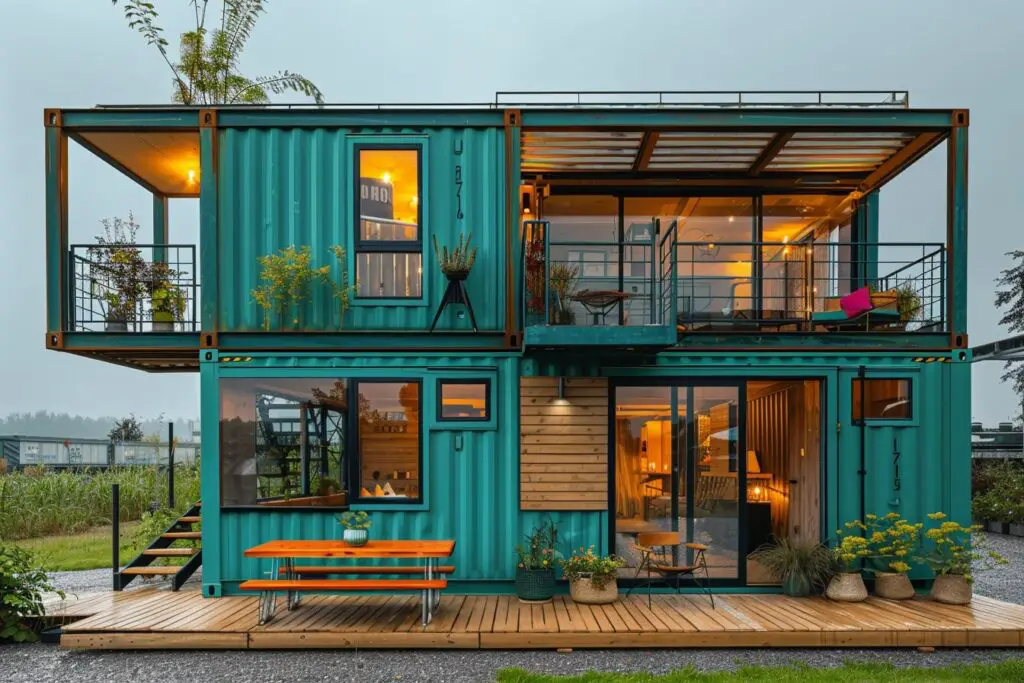
Container cabin communities refer to groups of homes made out of shipping containers, which have been modified for residential use. This housing concept gained traction due to its sustainability, affordability, and modularity.
Initially, shipping containers were repurposed for housing because of their abundance and low cost; it provided a creative solution to upcycle these sturdy structures. Over time, this fringe concept evolved into a mainstream architectural movement. The design options for these homes are vast and range from single-unit cabins to multi-container residences.
Here are some characteristics of container cabin communities:
- Sustainability: Often positioned as an eco-friendly choice due to the reuse of containers and the option for incorporating alternative energy sources.
- Affordability: Generally less costly than traditional homes, with basic container homes starting at low prices and increasing with size and customization.
- Modularity: The capability to easily expand by joining additional containers allows for phased construction and flexibility in design.
The development of such communities often embodies a shift towards minimalist living, highlighting a conscious decision to live more simply. Despite the rising interest, challenges exist, including zoning laws, building codes, and insulation concerns, that can influence the expansion of container cabin communities.
These communities also reflect a growing desire for social connectedness and communal living, which is evident in the burgeoning demand for container communities. The trend shows that container homes offer not just a unique aesthetic but also a lifestyle that resonates with those seeking a simpler, more environmentally conscious way of living.
Motivations Behind Choosing Container Cabin Living
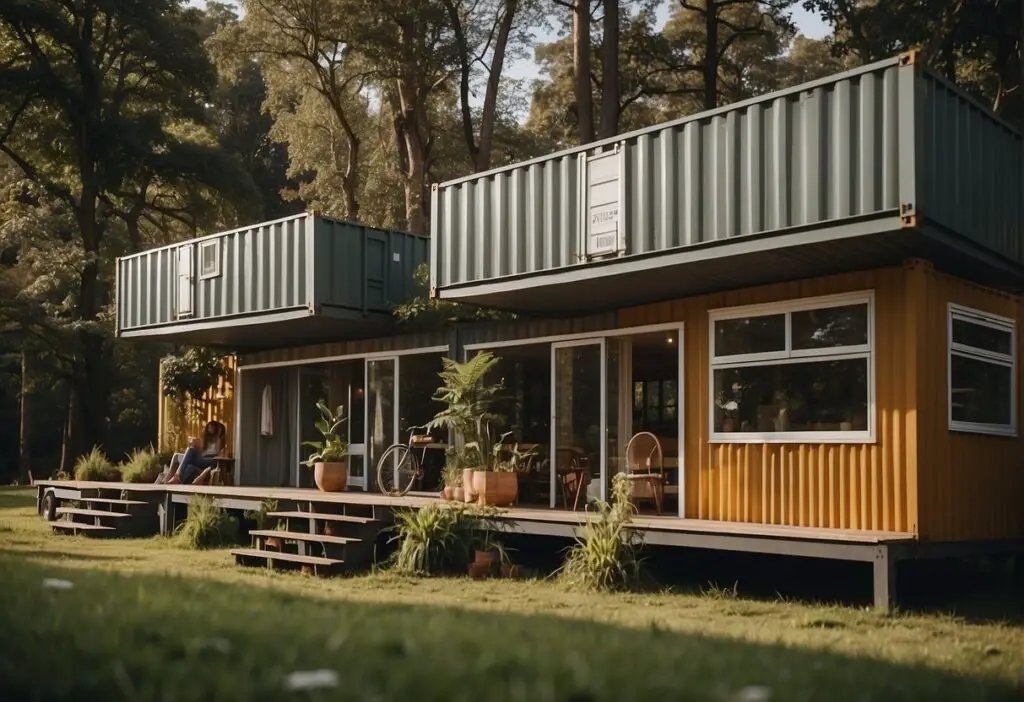
Container cabin communities are growing in popularity due to various factors that appeal to different demographics. These motivations range from economic advantages to lifestyle preferences.
Affordability and Sustainability
Affordability is a compelling reason for individuals to opt for container homes. Compared to conventional housing, these structures offer a significant reduction in cost, making homeownership accessible to a broader audience. Additionally, container cabins are often praised for their sustainability. By repurposing shipping containers, they reduce waste and the use of new construction materials, which appeals to environmentally conscious individuals.
Mobility and Flexibility
One of the notable features of container cabin living is mobility. Individuals who prioritize the ability to move their home with relative ease often find container cabins to be a pragmatic option. The intrinsic flexibility of these homes also allows owners to expand their living space by adding more containers or modifying the existing layout to suit changing needs.
Minimalist Lifestyle
Container cabins inherently promote a minimalist lifestyle due to their compact nature. Advocates for this lifestyle find container cabins appealing as they encourage the reduction of possessions to essentials, resulting in a clutter-free environment. This minimalist approach not only simplifies living but also highlights the functionality and efficiency of the layout within a smaller footprint.
Potential Concerns and Criticisms
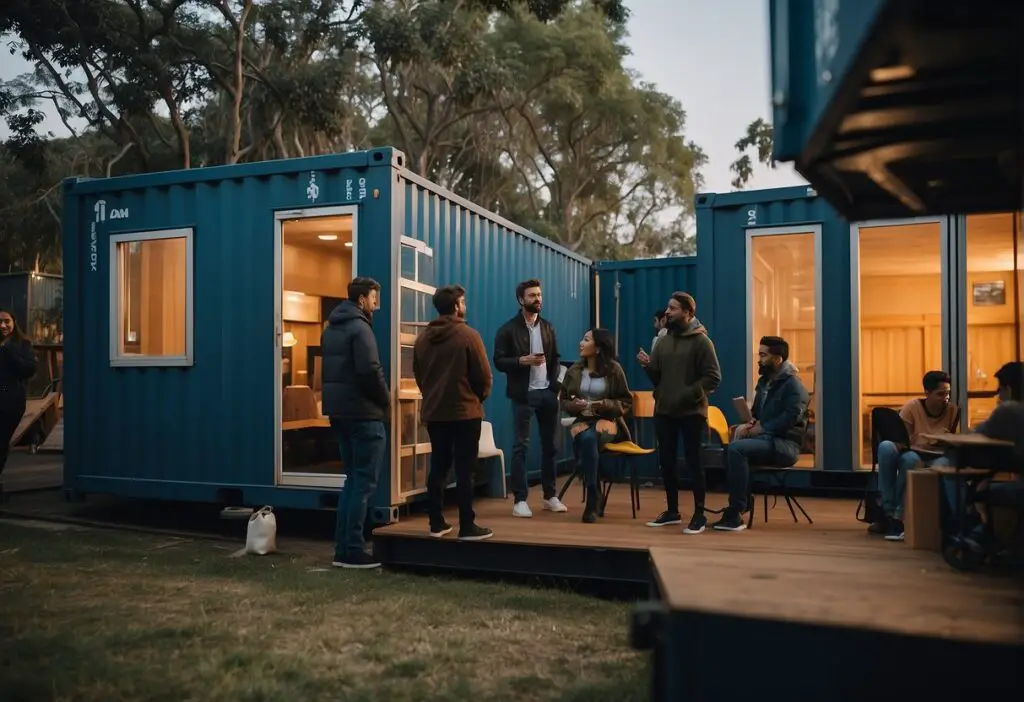
As container cabin communities grow in popularity, several specific concerns have emerged, including adherence to building codes, effects on existing communities, and environmental impacts.
Building Codes and Safety Regulations
Container cabins often fall under scrutiny regarding building codes and safety regulations. This housing form was not originally intended for human habitation, leading to potential structural complexities. For instance, modifying containers for windows and doors can compromise their integrity. Issues such as insulation and ventilation pose challenges for compliance with standard housing regulations. Notably, professionals have highlighted that shipping containers have structural problems inherent in their design when repurposed for housing.
Impact on Local Communities and Infrastructure
Container communities might induce strain on local infrastructure. There can be a disparity between the container housing capacity and the existing urban infrastructure, from sewage to roads. Furthermore, the aesthetic and cultural impact on local communities has been a point of contention, as these structures can starkly contrast with traditional neighborhood designs, potentially leading to social friction and issues with property values.
Environmental Considerations
Environmental evaluations of container homes must consider lifecycle and sustainability factors. Although often lauded for repurposing existing materials, concerns have been raised about the energy-intensive process of modifying containers for safe living spaces. The insulation materials necessary for human comfort can also have significant environmental footprints. Additionally, the notion that these homes are environmentally friendly by default is contested; as container farms highlight the challenges of repurposing, similarly, repurposing for housing is not without environmental cost.
Socio-Economic Implications
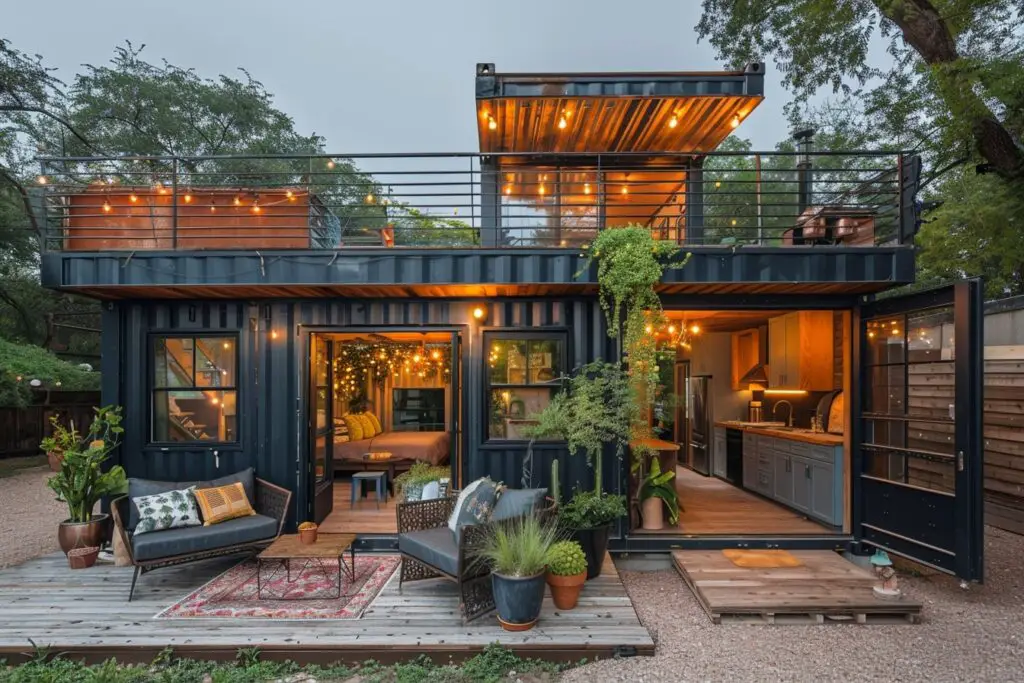
Container cabin communities are altering landscapes—in economic terms and social constructs. These changes impact the fabric of both urban and rural settings.
Effect on Housing Market Dynamics
The introduction of container cabin communities invariably affects the local housing market. As inexpensive and flexible housing alternatives, container cabins can lead to a decrease in traditional home demand in areas where affordability is a major concern. This dynamic might result in a stabilization or reduction in local housing prices, potentially benefiting lower-income buyers but impacting the expectations of current homeowners in terms of property value growth.
Community Building and Social Interaction
Container cabin communities offer unique opportunities for community building and social interaction. The communal layout often encourages more communal spaces and interactions among residents. With the focus on maximizing shared amenities, these communities can foster a strong sense of belonging and collective identity. However, the success of such social infrastructure largely depends on thoughtful planning and management to ensure inclusivity and community engagement.
Urban Planning and Policy Response
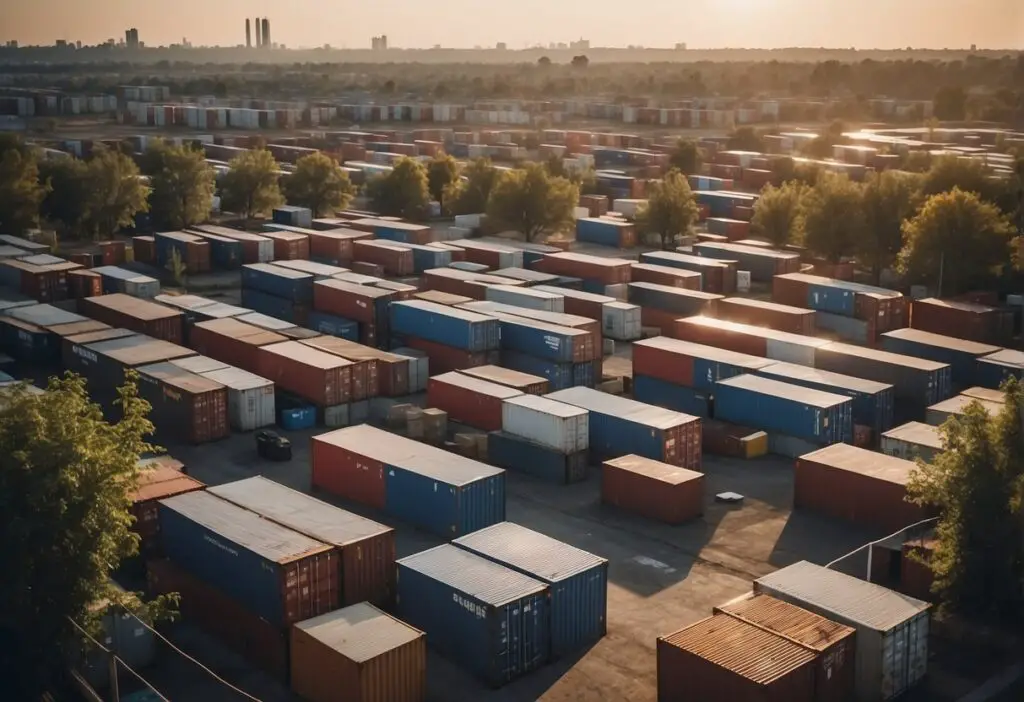
The rise of container cabin communities presents unique challenges and opportunities for urban planning and policy. Policymakers must navigate the intricacies of zoning laws while aligning with broader government and institutional objectives to manage this trend effectively.
Zoning Laws and Urban Development
Zoning laws play a pivotal role in the development of container cabin communities. These regulations determine where and how container homes can be built, often varying significantly from one municipality to another. For instance, some areas may have progressive policies that facilitate the use of shipping containers for housing due to their affordability and sustainability, while others may restrict their use due to aesthetic or structural concerns. Modifications in urban policies, such as those seen in the emergence of container urbanism, reflect how the built environment adapts to innovative housing solutions. Key factors include:
- Permitted Use: Whether container homes are classified as temporary or permanent structures can affect their legality in certain zones.
- Building Standards: Adherence to building codes ensures safety and habitability, with some areas requiring modifications to containers for compliance.
Government and Institutional Perspectives
Governments and institutions often take into account the potential benefits and drawbacks of container cabin communities. These entities must balance the need for affordable housing with community concerns and urban aesthetics. Moreover, strategic urban planning is critical for integrating these communities within the existing urban fabric, promoting a high quality of life, as seen in the feedback on urban policies. Institutions may consider:
- Sustainability Goals: Encouraging the use of upcycled materials aligns with sustainability objectives.
- Housing Policies: Adjusting policies to support innovative housing can address shortages and reduce urban sprawl.
By meticulously assessing the impact of container cabin communities, urban planners and policymakers can create conducive environments for these alternative living spaces to thrive, benefiting both residents and the cityscape as a whole.
Innovation and Future Prospects
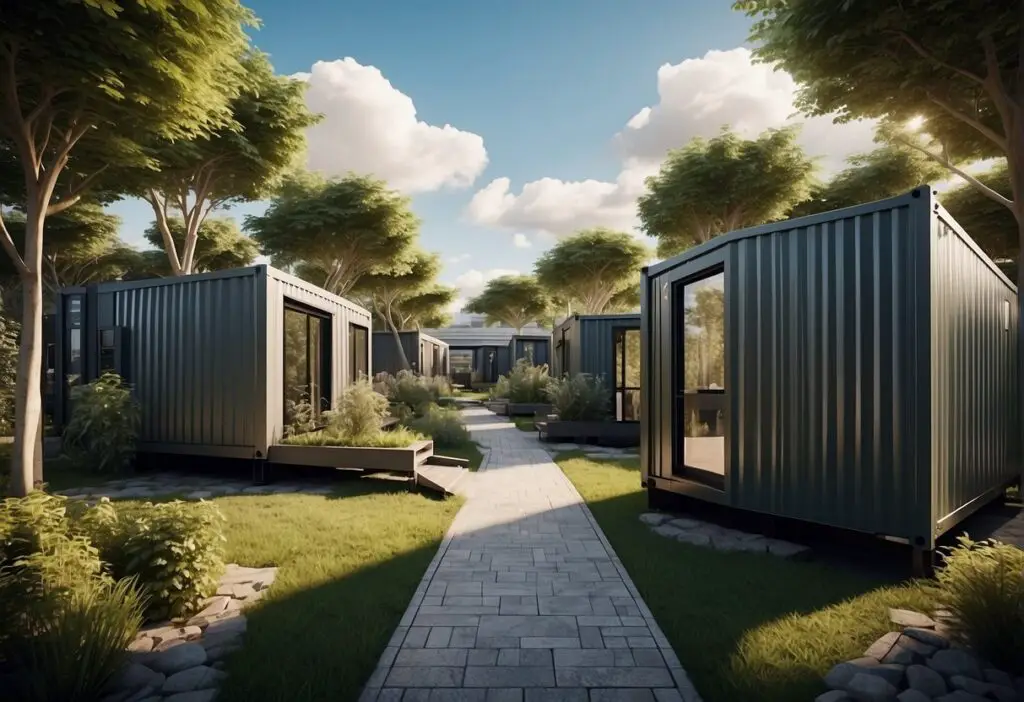
As the housing market evolves, container cabin communities stand out for their unique approach to sustainability and potential to inspire technological innovations. They represent a forward-thinking solution in addressing modern housing challenges.
Technological Advancements in Construction
Container homes have been at the forefront of utilizing modular construction techniques, significantly reducing construction time and waste. Innovative methods like 3D printing are also emerging, aiming to streamline the manufacturing process of container homes. For instance, cutting-edge insulation materials are being developed to enhance the energy efficiency of these structures.
Emerging Trends in Housing
Container homes are evidencing an upward trend as sustainable housing solutions, with a growing number of communities considering them to be a viable alternative to traditional construction. They are often championed for their ability to adapt to diverse environments and situations, including usage as affordable housing, emergency shelters, or luxury dwellings. The increasing emphasis on customization and community building within these projects is contributing to their rising popularity.
Conclusion
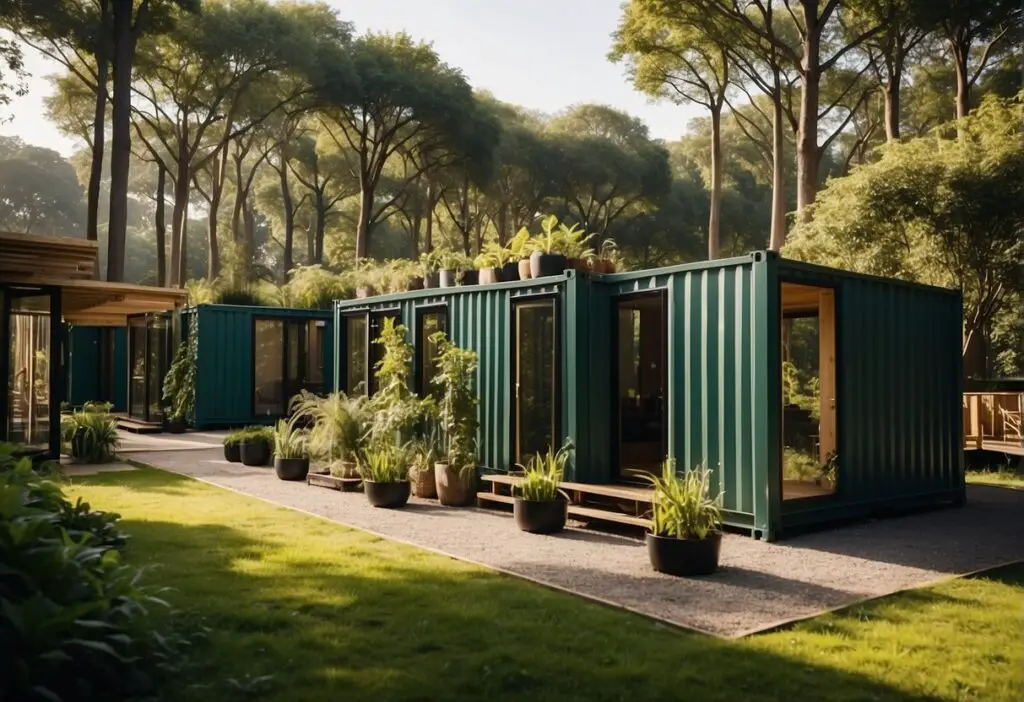
Container cabin communities are emerging as a distinctive solution to housing challenges. They offer affordable and sustainable living options.
Environmental Impact: Construction of container homes often uses fewer resources than traditional buildings. However, individuals must consider the importance of insulation and temperature control, as containers are made from steel which is an excellent conductor of heat and cold.
Community Dynamics: Residents typically share a common interest in sustainability and minimalist living. The social environment tends to be close-knit, fostering community spirit and cooperation.
Cost-effectiveness: The affordability of shipping container homes is a significant factor driving their popularity. Although upfront costs can be low, potential owners should not overlook ongoing maintenance expenses.
Regulatory Hurdles: Before diving into container home construction, it’s crucial to understand local building codes which can differ widely and present unexpected challenges.
Design Flexibility: Container homes are praised for their modularity, allowing for customization in design that caters to individual tastes and needs.
Prospective residents should weigh these considerations carefully. While these communities can offer a unique and eco-friendly living experience, it is essential to enter with a clear understanding of the practicalities involved.
